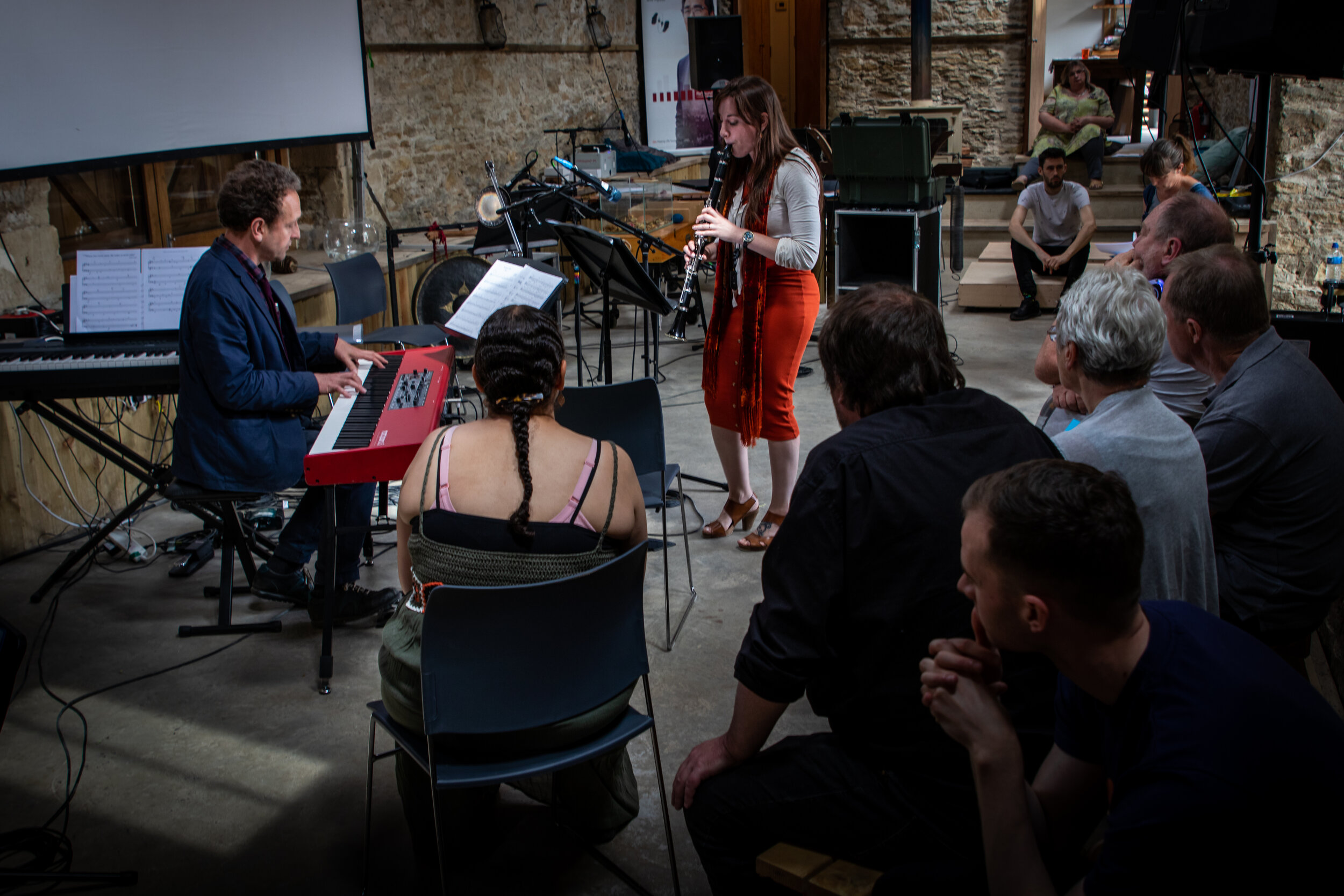

Everybody hears differently! From our early twenties onwards our hearing deteriorates (presbycusis). Millions of people have hearing conditions, ranging from profound deafness to increased sound sensitivity (hyperacusis) and many others in between. Even having a cold can change the way we hear.
Yet the world of music and sound design is built on an assumption that everybody hears the same. A perfectly balanced pair of normally hearing ears is the standard in everything from headphones to concerts, from environmental planning to interior design.
The Aural Diversity project explores sound and music that addresses the full range of human hearing types. As one of our musicians, Ruth Mallalieu, commented: "we should not keep trying to adapt to music; music should adapt to us".
An Aural Diversity concert is not a traditional music concert but an immersive music experience that takes into account the needs of people with different hearing profiles. We are not a group of disabled people trying to play music for normal people; but a group of aurally diverse people trying to redefine the concept of music and provide new listening experiences for everybody.
The project was featured on BBC Radio 3's 'Music Matters'. Listen to the interview here.
Directors: Andrew Hugill and John Levack Drever.
Funded by GNResound Ltd. and Arts Council England.
The first Aural Diversity concert was held on Saturday 6 July in Kelston, Bath. The second Aural Diversity concert was held at Attenborough Arts Centre, University of Leicester on 30 November 2019 during the first two day Aural Diversity Conference.






An Aural Diversity concert is a unique event, for several reasons:
Both the musicians and the audience are aurally diverse (because everybody hears differently). This means there are many different ways to listen and many different types of hearing.
Audiences, musicians, technicians and Aural Diversity concert organisers follow a set of rules or conventions.
There is no one type of music that represents Aural Diversity, but all music will be fully described in a written programme so as to enable audiences to choose how best to listen to each work.
The concert includes various ways of listening, including visual, audio streaming, signing, and even a vibrating floor. Performance follows a set of conventions including 'relaxed' sound and lighting, 'flapplause', and options to listen in break out spaces and even outdoors.
New, original performances have been created by aurally diverse musicians and are being performed in an environment that caters for the fact that everyone hears differently.




